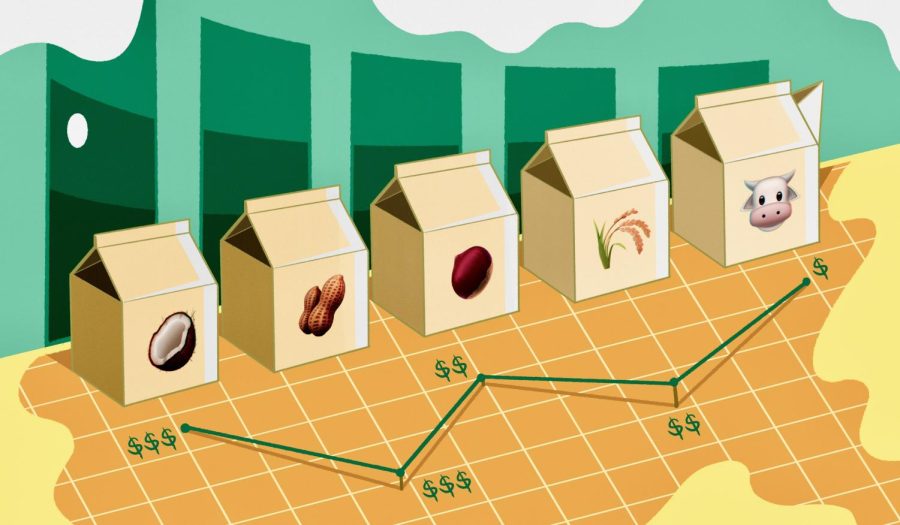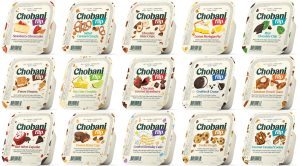Why Plant-Based Milk is More Expensive
Photo by Michelle/ UCSD Guardian
Jun 4, 2023
Whether you are environmentally conscious or lactose intolerant, it is frustrating to see the $5 latte (which is already outrageous, but that’s for a different conversation) turn into $6 with a non-dairy milk substitute. And, this is not including the syrups and extra espresso shots. It’s like a debate between paying the extra dollar, a bathroom trip, or, even, being environmentally conscious. I took it upon myself to check out the milk and alternatives prices at UCSD’s Target: $3.49 for a gallon of 2% milk, $4.29 for half a gallon of Silk soy milk, $5.99 for half a gallon of Oatly oat milk, and $3.99 for half a gallon of Silk almond milk. Even the cheapest substitute — almond milk — is twice as expensive as cow’s milk!
Your dairy-based latte isn’t cheap, but the price could very well be higher. The dairy industry is supported by the U.S. government, and prices are regulated more so now due to the COVID-19 pandemic. The Agricultural Marketing Agreement Act of 1937 aims to help establish a sustainable marketing condition with a dairy margin coverage when the difference between the U.S. milk price and the national average feed cost is under a specific dollar amount. In addition, the consumption of dairy in the U.S. has dropped by 40% per person since 1975, showing the growing need for aid in the industry. This subsidy aims to help dairy farmers and producers; $43 billion and $36.3 billion were given in 2016 and 2017, respectively. However, this aid was not provided for the non-dairy milk industries.
While plant-based milk has existed for a long time, such as soy milk in China, it was not until the late 20th century that it started to commercialize. Due to the novelty of this line of products, much research and development has gone into commercialization and the essential nutrients the milk should contain. Furthermore, plant-based milk is marketed more heavily than dairy milk, which is also reflected in the increased cost you and I pay. The industry plans on expanding and successfully growing 5% in the milk industry in 2019.
Depending on where in the world you are, your dairy milk prices could vary. In the United Kingdom, dairy milk is cheaper than in the U.S., meaning that English lattes are cheaper than American ones – the only thing, besides producing good rock bands, that they are better than us at. The price difference is due to the production cost: American cows are kept indoors while English cows are not, increasing energy costs. How pretentious of us.
Coffee chains are slowly either removing the extra charge for plant-based options or making plant-based milk the default. Blue Bottle Coffee is an example of a coffee chain that made oat milk the default, resulting in a 45% increase in plant-based milk sales. Since their drink prices start at $5.50, I would assume that the cost of oat milk is included in their costly drinks.
The environmental impact of the type of milk varies, from the high level of methane released from cows to the high volume of water needed to grow and produce almond milk. This is a complex topic and we must get down to the nitty-gritty before determining the best milk product. Even so, it varies from country to country. At the end of the day, a large part of the cost originates from government subsidies and the research & development of plant-based milk. So now you know why your oat lattes are so expensive, and you now know you could go to the U.K. for a cheaper soy latte.
Art by Michelle Deng of the UCSD Guardian


















Elon • Apr 11, 2024 at 10:13 am
Plant-based milk often costs more due to high production and distribution costs. However, businesses can leverage tools like competitor price tracking and monitoring software by to stay competitive. This software automates tracking, centralizes metrics management, provides comprehensive analytics to uncover market opportunities, and offers AI-based repricing strategies, helping businesses navigate the market effectively without constantly manually checking competitors’ prices.